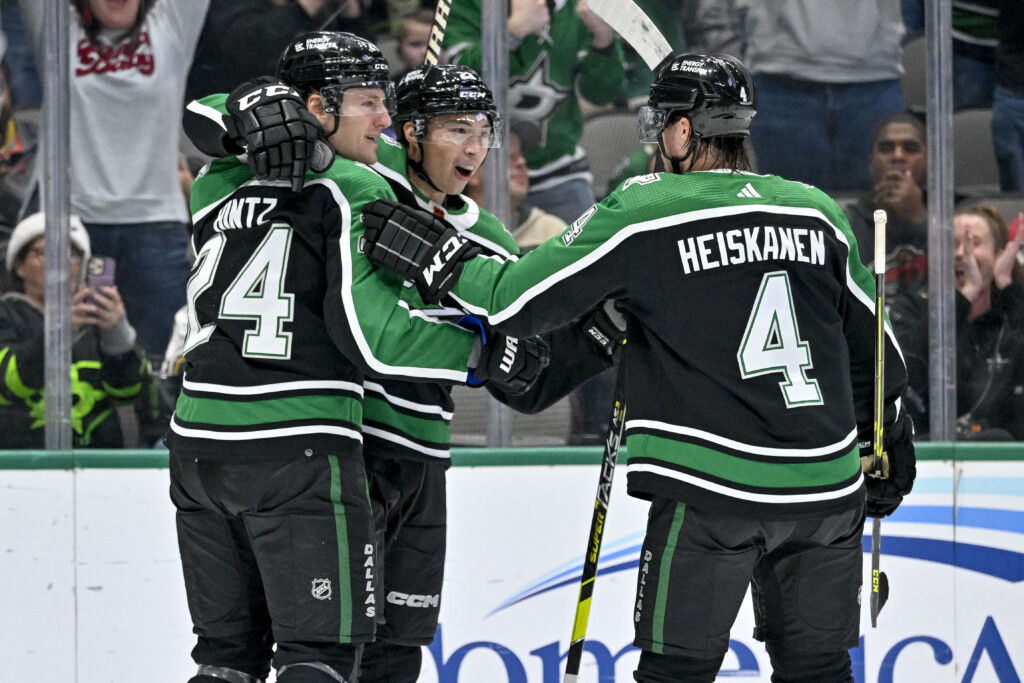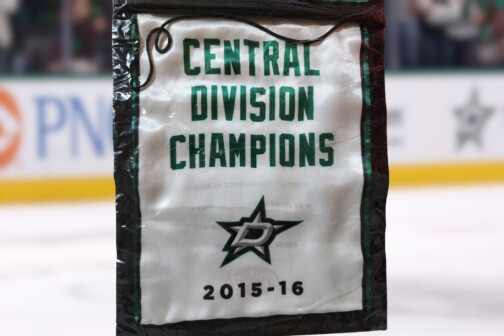A few years after Jim Nill became the general manager of the Stars, the team’s core began to rise. Jamie Benn won the Art Ross, and John Klingberg was a Calder (and future Norris) candidate. A forward with Art Ross potential, a Calder candidate, and a Norris dark horse—sounds familiar, doesn’t it? It shouldn’t because that’s not how it’s supposed to work. Teams are supposed to wax and wane with their cores. Once the core is done, so are the team’s fortunes. This is what sports teams call a “rebuild,” and it occurs in every organization, even when the personnel won’t admit it. But in a sport where many front-office executives lose their dignity in hopes of winning the draft lottery, Nill has kept his. With Jason Robertson, Roope Hintz, Miro Heiskanen, and Jake Oettinger all locked up and in their prime, Nill has rebuilt the Stars without tanking.
So how did he do the seemingly impossible? I’m not sure Nill realized what he was building when he traded Loui Eriksson and a grab bag of prospects for Tyler Seguin and Rich Peverley in 2013. I’m inclined to believe he didn’t, either. The Stars weren’t a good team when he took over just months before that trade. But the thing is that they weren’t outright awful, either. On the surface, that sounds like an easy fix; if they weren’t that bad, they just needed to get better to be good. Except the team’s performance before Nill’s arrival was awful. In the previous five seasons, the Stars controlled just 48 percent of the expected goal share at even strength, which ranked 25th in the league. So Nill took over a team that couldn’t even offer him the courtesy of finishing low enough to draft high. The Seguin trade changed all that overnight. (As did the addition of Peverley, who since moving into the front office has overseen a much-improved player development program.)
Achieving the impossible is not the same as infallibly achieving, though. The Stars missed the playoffs after the big splash trade for Jason Spezza in 2014, and they didn’t live up to their promise during Lindy Ruff’s four-year run. The end of Ruff’s tenure could have signaled the start of a long-term problem. It’s not hard to envision what might have happened because we see it all the time. Case in point: Vancouver. After missing the playoffs in four straight seasons, the Canucks won two playoff rounds in 2020. Instead of recognizing the mirage for what it was, they insisted on trying to win now. Now new management has a coach it didn’t pick, and instead of getting assets at last season’s trade deadline for J.T. Miller, he was signed to a $8 million per year albatross on a team that was not expected to contend immediately. And the Canucks haven’t. The same happened in Chicago with Seth Jones, in San Jose with Erik Karlsson, and in New York with Artemi Panarin. The mandate to “win now” usually disrupts the rebuilding process for many teams. That hasn’t happened under Nill.
Part of any successful rebuild is deftly managing the salary cap. Fans might have frowned on the Benn and Seguin contracts, but they were deals any other GM would have made. And that didn’t stop Nill from signing the new core long-term. None of this works without good drafting, and 2017 is when Nill transitioned from the old core to the new.
The day you replace your core at the draft is the day you start losing games as you wait for your new additions to be NHL-ready. But again, that didn’t happen under Nill. Using even-strength plus-minus as a way to measure the quality of Nill’s work, the Stars started trending up as soon as he took control, despite inheriting basically having no draft capital.
That’s a lot to unpack, but the most important info is what the graph doesn’t show. Per Travis Yost’s research, rebuilding teams take about five years to go from a bottom-five team to a team with a good chance of making the playoffs. Nill avoided this altogether and built a line of succession at the same time. Can you name anyone on the Blackhawks’ roster who can replace Jonathan Toews and Patrick Kane? What about players who can take over for Alex Ovechkin and Nicklas Backstrom with the Capitals? Sidney Crosby and Evgeni Malkin in Pittsburgh? Anze Kopitar and Drew Doughty with the Kings? For the Stars, it’s easy: Robertson has replaced Benn, Hintz has replaced Seguin, and Heiskanen has replaced Klingberg.
In some ways, Nill’s job is done. The Stars have missed the playoffs in consecutive seasons just once, and two things are worth noting about that if you look at the graph: first, the 2016-17 season was about injuries, not inefficiencies, and for as much criticism (deserved, granted) as Ken Hitchcock received, that team deserved a much better fate. (In fact, Dallas was the only team in the top 12 with a positive even-strength goal differential to miss the playoffs.) Under Nill, the Stars since 2017 have been a blisteringly effective team at the draft table. Plus, look at the success of the coaches he has hired: Ruff, Jim Montgomery, Rick Bowness and Pete DeBoer—that’s a pretty darn strong display of good judgment. What more could anyone ask for in a GM?
Well, a Stanley Cup would be nice. The Stars are a really good team, and they’re for real. But one of Nill’s biggest flaws continues to show. He has always been slow to plug holes when needed, whether it was goaltending and defense under Ruff or secondary scoring under Bowness. Under DeBoer, Dallas’ biggest problems are the leaks that are beginning to show on the blueline and within its middle six. Much has been made about Oettinger returning too soon from his lower-body injury, but little has been said about the defense being 30th in high-danger shots on net allowed since Thanksgiving. All but 11 of the 28 goals the Stars have allowed during that span have been of the high-danger variety. Neither Radek Faksa nor Denis Gurianov is the answer next to Seguin and Mason Marchment.
DeBoer has done what he can. Reshuffling Gurianov next to Benn and Wyatt Johnston, and Seguin and Marchment next to Ty Dellandrea is showing early positive returns. Sticking Heiskanen next to Nils Lundkvist maximizes Lundkvist’s game without lowering Heiskanen’s. But would Nill give up assets to clear cap space in order to make a move or two? All of the blueline regulars are signed for at least the next two seasons, and none of the tradeable forwards would be considered attractive to opposing teams. Meaning Nill would have to do something uncharacteristic if he wants to give DeBoer a full deck. What that might be? It could involve something major like trading for Jacob Chychrun or Brock Boeser, or it could be a minor deal, like giving Jesse Puljujarvi or Filip Zadina a change of scenery. There’s no reason to be bashful. Dallas is fifth in the league. If they stay fifth by Christmas, they’d have a 100-percent chance of making the playoffs.
Nill believes in loyalty and patience. His philosophy has been good enough to rebuild without tanking, but can he go all-in if the right opportunity presents itself?
That’s the only thing that matters. Nill’s trade for Lundkvist was out of character. So maybe he has it in him to learn new tricks. But this all depends on how much he believes in this team. Maybe trading a first-rounder for a prospect, as Nill did to acquire Lundkvist, was the first domino among many to fall in order to finally push in all of his chips. Or perhaps he believes in his process too much to deviate. Nill deserves a lot of credit for doing what nobody else has, but he still has unfinished business. And with the Stars surging, now is the best time to get to it.
Get the ItList Newsletter
Author







